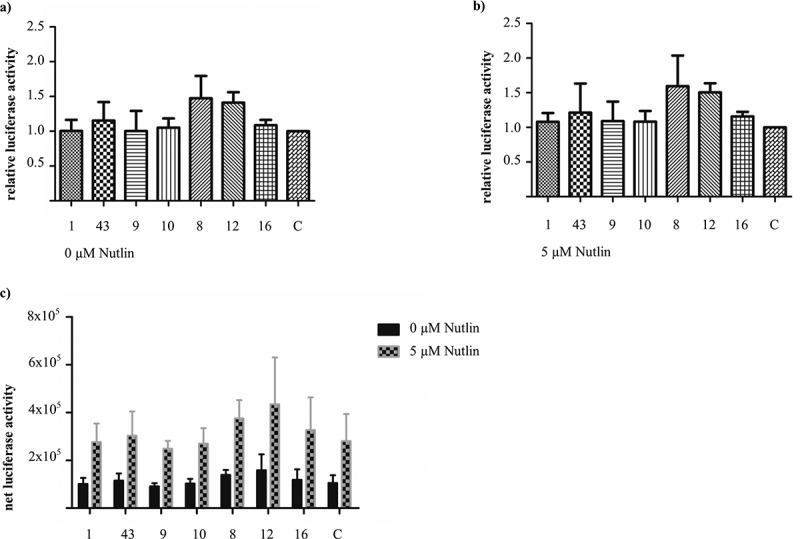Figure 4.

Evaluating p53’s functionality as transactivator in the presence of p53 TAD nanobodies. The U2OS pGL13 cell line expresses a luciferase reporter gene in a stable manner. This reporter gene is preceded by 13 repeats of a p53 response element. Measurement of the luciferase activity in U2OS pGL13 cells, which transiently express p53 TAD Nbs, thus allows the assessment of possible manipulation of p53’s transactivation function by the Nbs. An irrelevant nanobody, Fsc Nb2, was implemented as negative control (C). (a) The Nbs do not significantly affect p53’s transactivation potential compared to the negative control, despite some fluctuations in relative luciferase activity (one-way ANOVA, Dunnett’s multiple comparison test, P-value = 0.55). Luciferase activity was measured 48 h after transfection. (b) Transfected U2OS pGL13 cells received 24 h post-transfection an additional treatment with 5 µM Nutlin3a. Analysis of luciferase activity 24 h post-Nutlin3a treatment, did not reveal significant differences in luciferase activity (one-way ANOVA, Dunnett’s multiple comparison test, P-value = 0.64). (c) Comparison of net luciferase activity measured in transfected U2OS pGL13 cells which received (or did not receive) an additional treatment with 5 µM Nutlin3a. In the presence of 5 µM Nutlin3a a significant increase in luciferase activity can be observed (P-value < 0.0001), whilst the Nbs have no effect (P-value = 0.80). Both treatments do not interact (P-value = 0.99). Data were analyzed via a two-way ANOVA.
